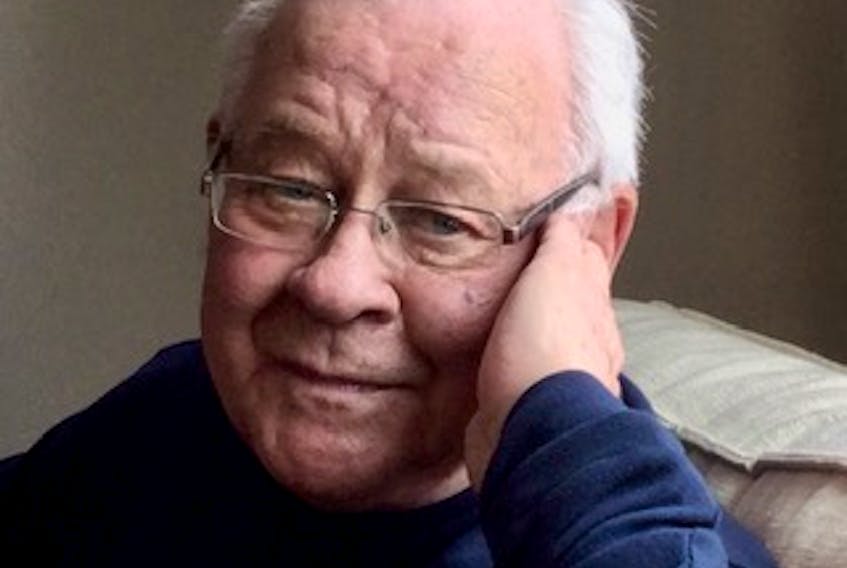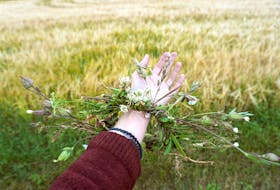At age 86, journalist and author Harry Bruce contemplated marketing himself as the Comeback Kid, but feared it was too cliché. The Comeback Hack might be better, he joked.
A journalist for 66 years and a columnist for The Chronicle Herald for a quarter of a century, Bruce recently published his 15th book. Halifax and Me (Pottersfield Press) is his first book since Page Fright: Foibles and Fetishes of Famous Writers came out more than a decade ago.
“Seven years ago, while accepting the lifetime achievement award, at the annual banquet of the Atlantic Journalism Awards organization, I complained that lifetime sounded so final and asked, ‘May I not look forward to the sequel?’” Bruce wrote in a recent email exchange with me. “And now, something of a sequel does indeed seem to have come about, and I expect to resume writing in a month or two. I may just be the oldest still-active professional writer in the country.”
Bruce, who recently underwent surgery that has forced him to take what he hopes will be a short break, is looking ahead to Pottersfield Press publishing another book next spring. As he approaches his 87th birthday, he will celebrate with the launch of his next book, The Perfect Day, And Other Stories.

In Halifax and Me, Bruce traces his life-long relationship with the city, and celebrates its blossoming into what he calls, “a city to dance in.”
“I owe my life to Halifax, or at least to my parents’ having met there in 1927, the age of bathtub rum, the Model T Ford, and plinka-plinka ukuleles. While the city was a historic international seaport, it was also a two-bit provincial capital with a population of only 70,000 at most.
“It still had blacksmiths, harness-makers and livery stables, but cars and trucks, sold by 17 auto dealers and repaired by 10 service stations, now dominated traffic. Supermarkets had yet to be invented, but no worries, Halifax boasted more than 270 grocery stores. It also had 77 dressmakers, 51 butchers, 15 fish shops, four daily newspapers, countless bootleggers and speakeasies, and luxury steamships that offered romantic cruises to the West Indies,” Bruce writes in the book’s opening.
Bruce’s connection to the city began in 1934 when he was born. He left Halifax with his parents when he was a young boy and returned in 1953 at age 18 on assignment from the Royal Canadian Navy. Back in his hometown after a long absence, the then young, sensitive man who wrote poems in secret found it to be “mysteriously depressing.”
“But if Halifax was gloomy, it was also dramatic. For it had the sea, and all the stories, ships, tugs, horns, toots, whistles, harbour lights, and fogs, tides and roaring winds that went with the sea. What awaited me in the strange streets of this world port? In what manly adventures would I excel while sailing o’er the bounding main? I was 18, and on my way. Halifax was my oyster,” he writes.
Bruce ends his book with a deep appreciation for the city he grew to love during his eight decades of living.
“Halifax is daffodils and cannons, fogs and ironstone, kilts and gulls, kites and lobster rolls, donairs and Cape Islanders, old spires and new penthouses, your own backyard and the big shipyard, the trendy North End and the poodles in the park, Joe Howe in bronze and the Titanic in miniature, a broken man on a Halifax pier and Oscar Wilde at the Waverley Inn,” he writes, admitting that he couldn’t possibly record all of the scenes and sounds that make him feel good about the old city now.

Growing Under Cover
Halifax-based, expert gardener Niki Jabbour has practical advice for all growers who wrestle with everything from frost, hail, wind and drought to deer, squirrels or unwanted pests in her new book Growing Under Cover: Techniques for a More Productive, Weather-Resistant, Pest-Free Vegetable Garden (Storey Publishing).
“I am an under-cover gardener,” writes Jabbour. “And no, that doesn’t mean I’m a garden spy covertly peeking through the hedge at my neighbour’s veggie patch. It means I’m a gardener who uses simple but effective covers to grow more food.”
Jabbour gives useful tips to help gardeners find the best and often inexpensive way to cover gardens whether it be cold frames, row covers, hoop tunnels or cloches - a covering for protecting plants from cold temperatures.
The Great Influenza Pandemic
Ruth Holmes Whitehead has compiled and edited a new book, Nova Scotia and the Great Influenza Pandemic, 1918-1920: A Remembrance of the Dead and an Archive for the Living (Nimbus Publishing).
Living amid a pandemic, it was eerie to learn that more than 2,000 Nova Scotians died during the influenza pandemic a century ago. Maybe the most chilling part of this thoroughly-research book comes at the end: a list of names of the dead that covers several pages.
Relatives of people who were alive during the great influenza were interviewed and their heart-wrenching stories show that every city, town, village, and isolated settlement was affected.
Whitehead wanted her book to be “a useful guide for what to do and what not to do” in a pandemic. But by the time the book was published, the world was seized by COVID-19.
Looking back, the great influenza taught that the most important thing any government, at any level, can do in a pandemic is to tell people the absolute truth about what is going on, what the dangers are, and what measures they need to take, writes Whitehead.
What If?
Writer and illustrator Doretta Groenendyk wrote a sensitive picture book that touches on the anxiety some children experience and what it might be like if a parent responded to that fear with kindness and a sense of joy.
What If? (Acorn Press) takes a young, worried child on a journey through colourful images of a panicked world filled with self-doubt, fear and endless questions that begin with: What if? It then pushes through to a world of possibility that is transformed by a parent’s positive response: What if something good happens? What if you make a friend?
Groenendyk, a painter, writer and teacher, lives with her husband and three children in the Annapolis Valley. She is the author and illustrator of several bestselling books including Hockey Morning, and Noon and Night.

Planet Digby
The beautiful, abstract photos in H. M. S. Smith’s latest book, Planet Digby: Future Landscapes (SSP Publications) are reflections of fishing boat hulls in the harbour in Digby.
Smith hopes his colour photos, which are complemented in the book by a wide-ranging selection of poetry, will serve, in part, as commentary on climate change and our part in it.
“What will the Earth look like in 100 years, 1,000 years, 10,000 years?” Smith asks. “What you see on Planet Digby may not be familiar. Looking thousands of years into the future may be unsettling, but the Earth, with our help, might still be beautiful.”








